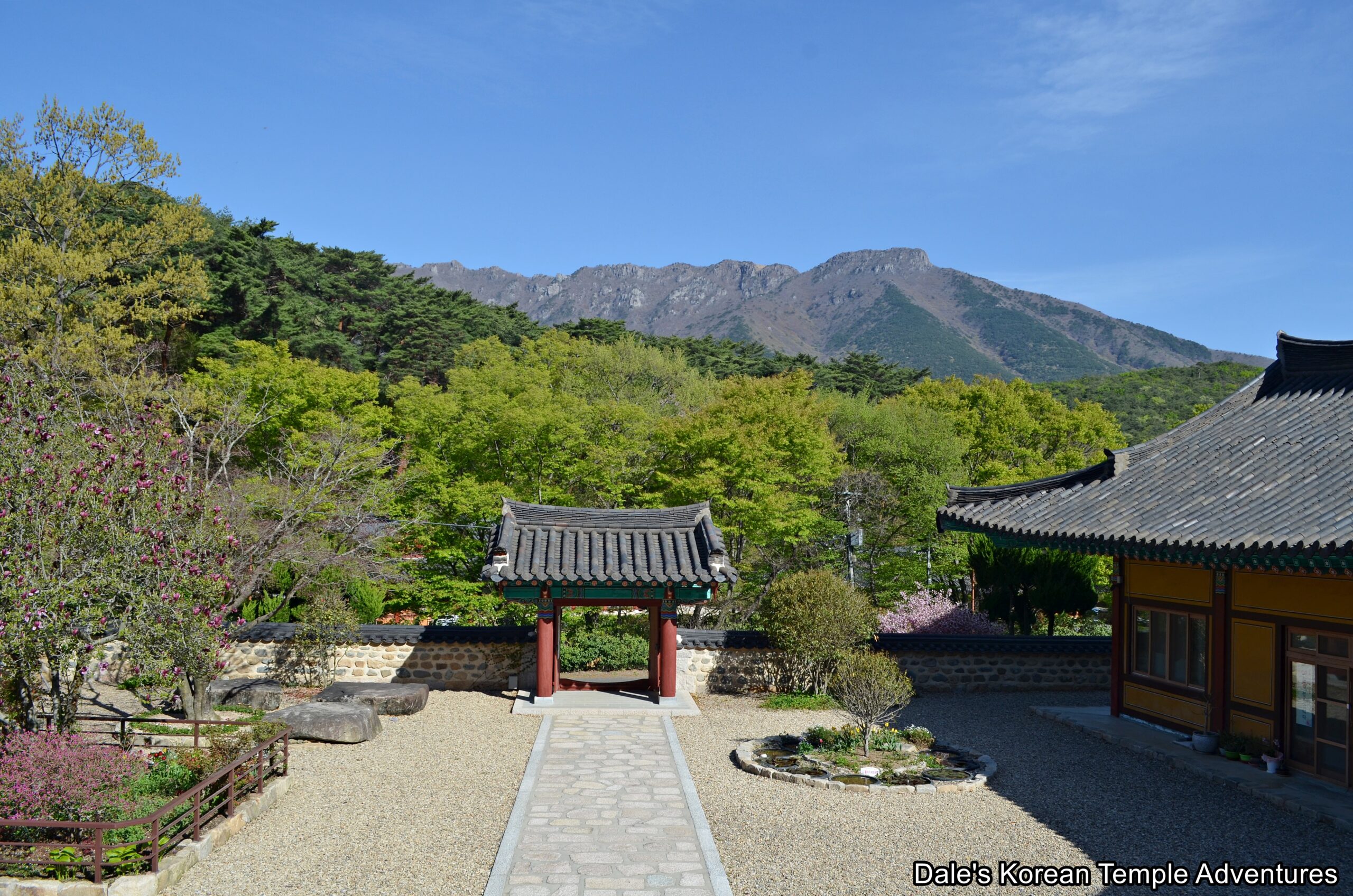
Hermitage History
Botaam Hermitage is located on the Tongdosa Temple grounds in Yangsan, Gyeongsangnam-do. There is one story about the founding of the hermitage that states that it was created by the monk Yeongchun in 1927. And later, the nuns Jaedeok and Hojeon moved to Botaam Hermitage from a cave in Wondong. Another story states that it was simply created by the nuns Jaedeok and Hojeon in 1927. And yet another story states that while Yeongchun was residing at Tongdosa Temple, he moved to the location of Botaam Hermitage under the recommendation of the monk Gyeongbong. It was after this that Yeongchun called the newly built hermitage Botaam Hermitage. As a result, there’s a distinct possibility that Yeongchun called the hermitage Botaam Hermitage after the nuns Jaedeok and Hojeon had already built the hermitage.
Whatever might be true, the hermitage was later expanded in 1935 by the nuns Hojeon and Jeongun. And since then, Botaam Hermitage has continued to be expanded and reconstructed to its present size and layout.
Hermitage Layout
Of all the hermitages at Tongdosa Temple, Botaam Hermitage is geographically the closest. Botaam Hermitage is just 300 metres south of the main temple. As you approach the hermitage grounds, you’ll notice that the hermitage is divided into two areas. The area to the left is the off-limits area reserved for nuns at Botaam Hermitage. A little further to the right, and you’ll find a beautiful entry gate that frames the main hall. The courtyard out in front of the Daeung-jeon Hall is filled with beautiful flowers like tulips and magnolia trees during the springtime.
Just before mounting the stairs that lead up to the Daeung-jeon Hall, you’ll find a raised relief stone in a lotus flower design. Climbing the stairs, you’ll find a vibrantly painted main hall. The exterior walls are adorned with two sets of murals. The upper set consists of the Shimu-do (The Ox-Herding Murals), while the lower set consists of Buddhist-motif murals dedicated to Gwanseeum-bosal (The Bodhisattva of Compassion). Stepping inside the Daeung-jeon Hall, you’ll find the main altar occupied by a triad of statues. In the centre rests Seokgamoni-bul (The Historical Buddha), who is joined on either side by Jijang-bosal (The Bodhisattva of the Afterlife) and Gwanseeum-bosal. Rather uniquely, the canopy overtop of the main altar looks like one large floral bouquet with its intricate floral designs. And hanging on the far left wall is a modern Shinjung Taenghwa (Guardian Mural).
To the right of the Daeung-jeon Hall is the Yaksa-jeon Hall. The exterior walls to this shrine hall are adorned with murals dedicated to Yaksayeorae-bul (The Buddha of Medicine, and the Buddha of the Eastern Paradise) alleviating the pain and suffering of those in need. There are also murals of Bicheon (Flying Heavenly Deities), as well as a beautiful triad painting of Yaksayeorae-bul being joined by Wolgwang-bosal (The Bodhisattva of Moonlight) and Ilgwang-bosal (The Bodhisattva of Sunlight). Stepping inside the Yaksa-jeon Hall, you’ll notice a solitary image on the main altar. This is Yaksayeorae-bul. Joining Yaksayeorae-bul inside the Yaksa-jeon Hall are a pair of shaman paintings. The painting to the left is dedicated to Sanshin (The Mountain Spirit), while the painting to the right is dedicated to Dokseong (The Lonely Saint). Both are modern in composition.
To the right of the Yaksa-jeon Hall is a newly built Yosachae (dorms). And if you look back from where you first entered the hermitage grounds, you’ll notice the beautiful peaks of Mt. Yeongchuksan (1,082 m) off in the distance.
How To Get There
From Busan, you’ll first need to get to the Nopo subway stop, which is stop #134. From there, go to the intercity bus terminal. From the intercity bus terminal get a bus bound for Tongdosa Temple. The ride should last about 25 minutes. The buses leave every 20 minutes from 6:30 a.m. to 9:00 p.m. From where the bus drops you off at the Tongdosa Temple bus stop, you’ll need to walk an additional 10 minutes to the temple grounds west of the bus stop.
From Tongdosa Temple, you’ll need to continue up the main road for another 200 metres. Botaam Hermitage is just to the south and is well-marked by a large stone with the name of the hermitage on it.
Overall Rating: 4/10
The highlight of Botaam Hermitage, at least in my mind, is the beautifully manicured courtyard and the flowers that were in full bloom. Added to this are the beautiful murals that adorn the exterior walls of both the Daeung-jeon Hall and the Yaksa-jeon Hall. Another added bonus is its close proximity to Tongdosa Temple. So when you’re finished with the main temple, perhaps a nice little stroll down to Botaam Hermitage is what you’ll want and need next.
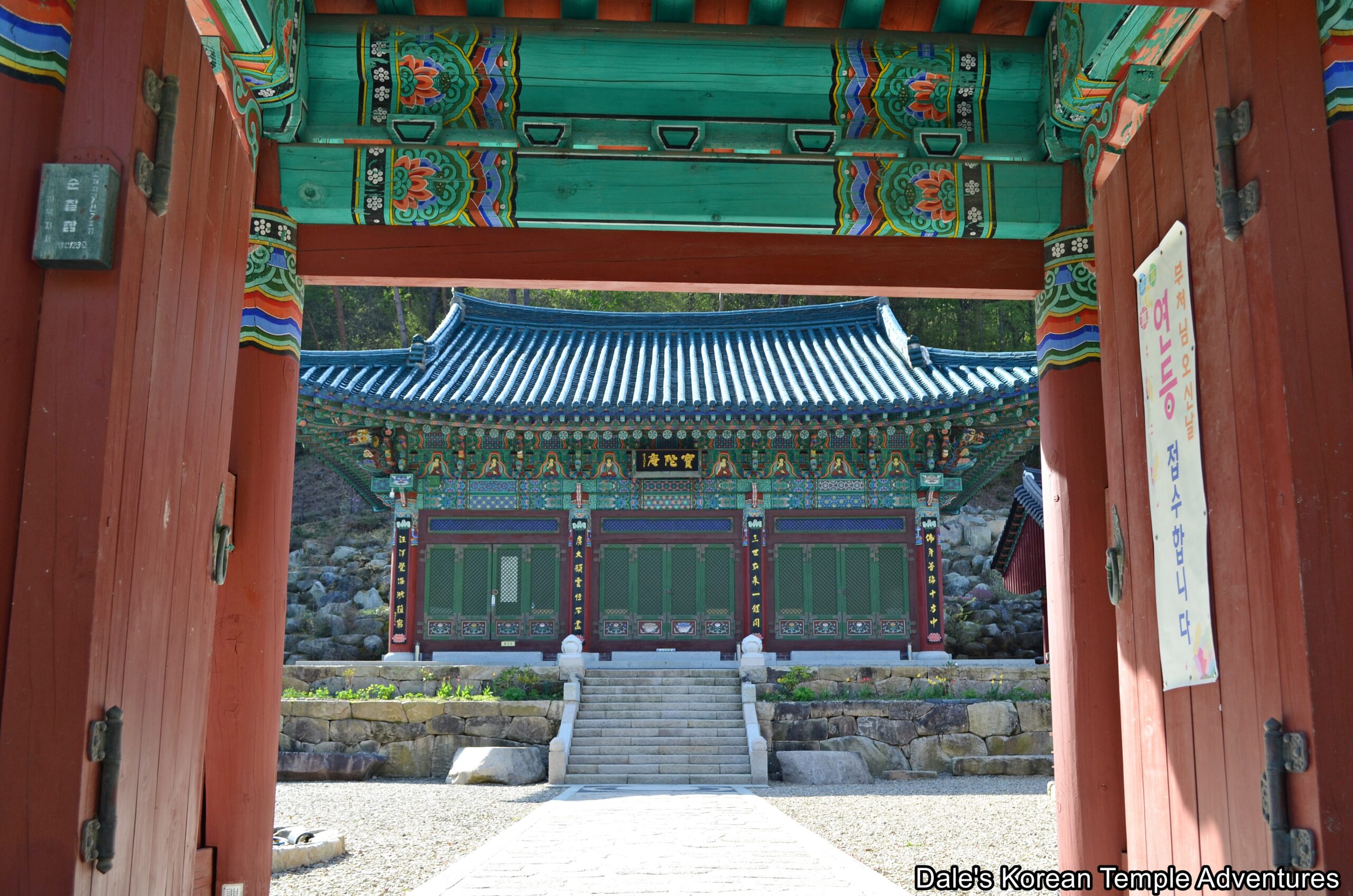
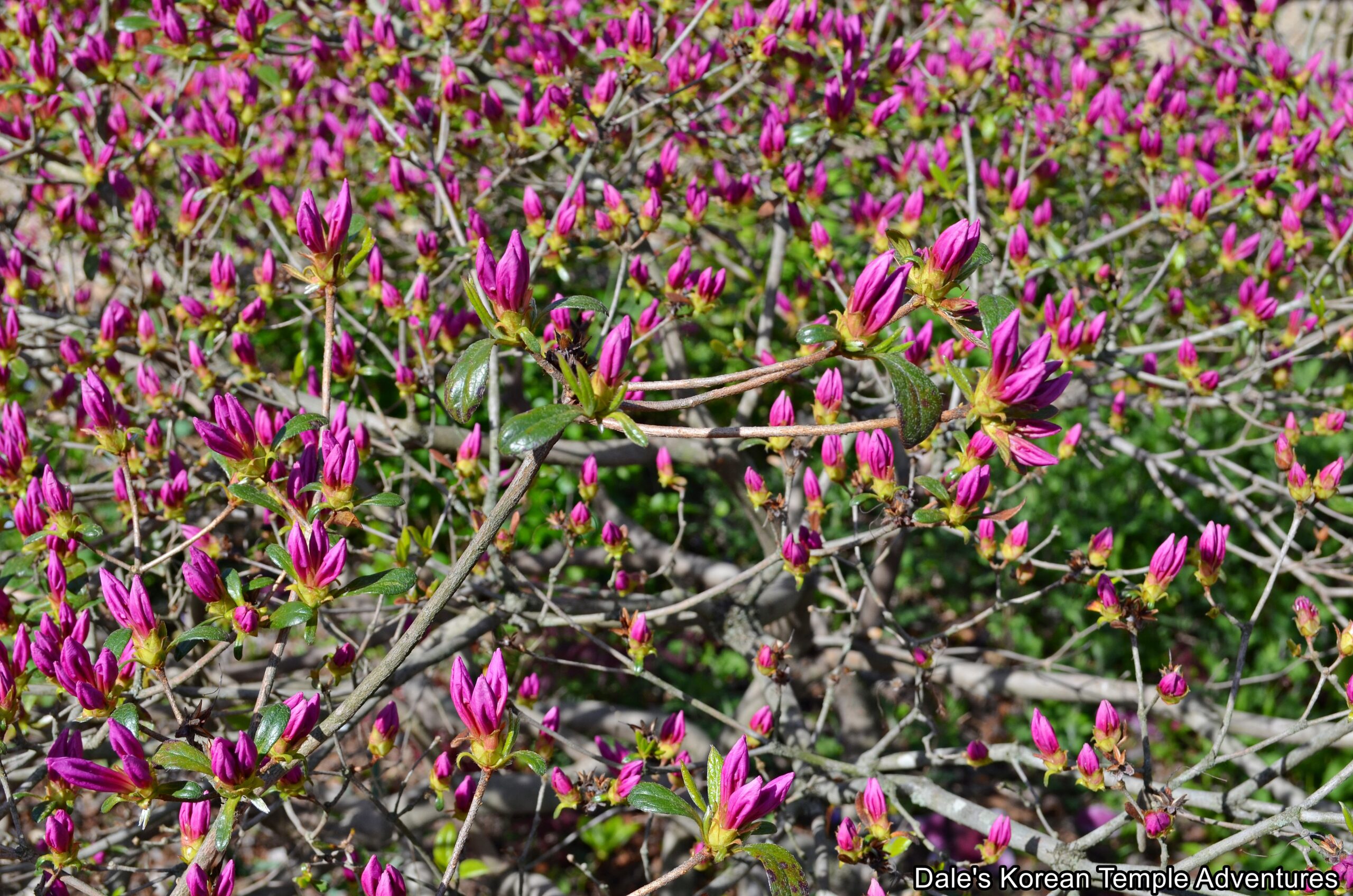
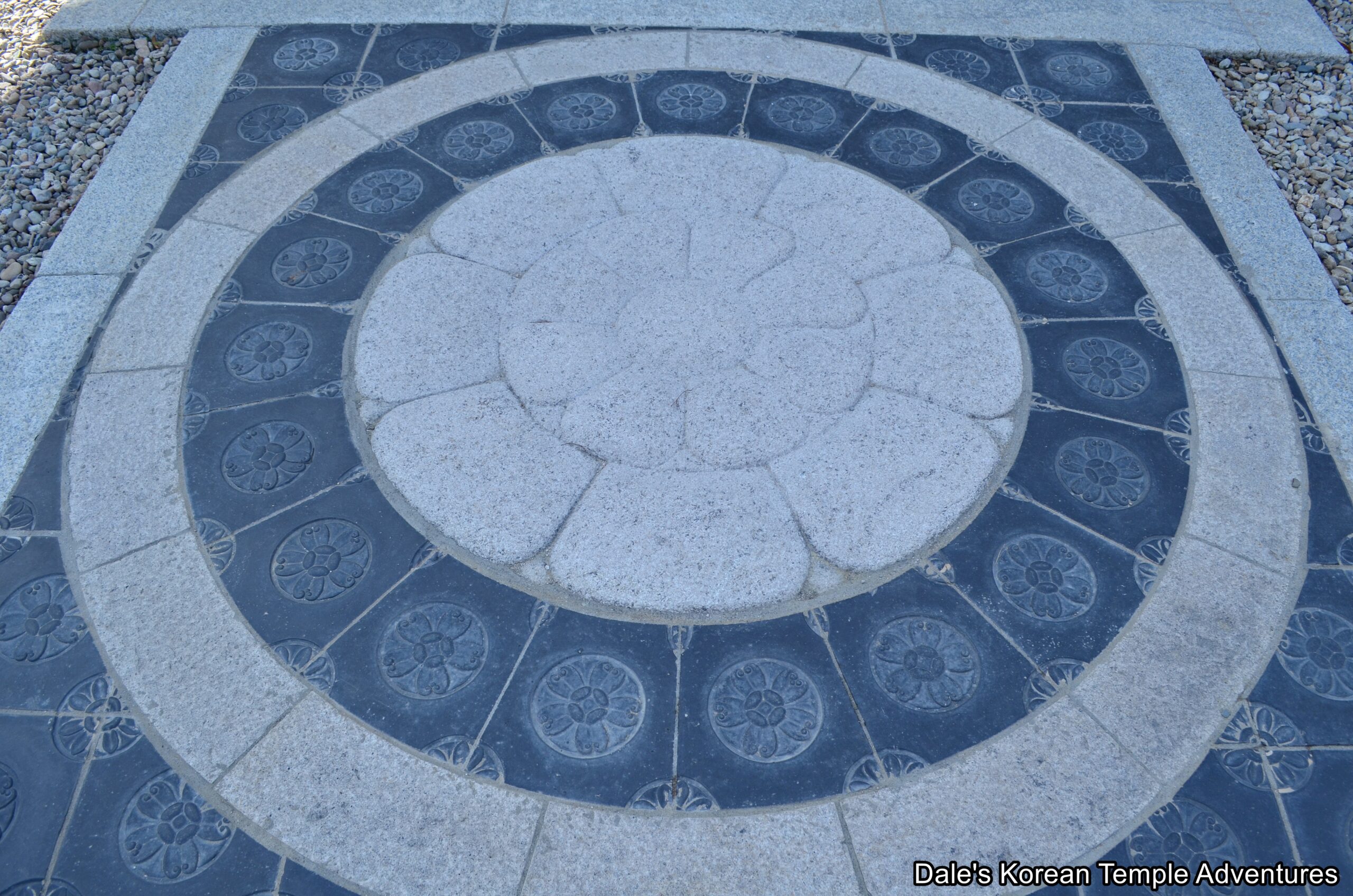

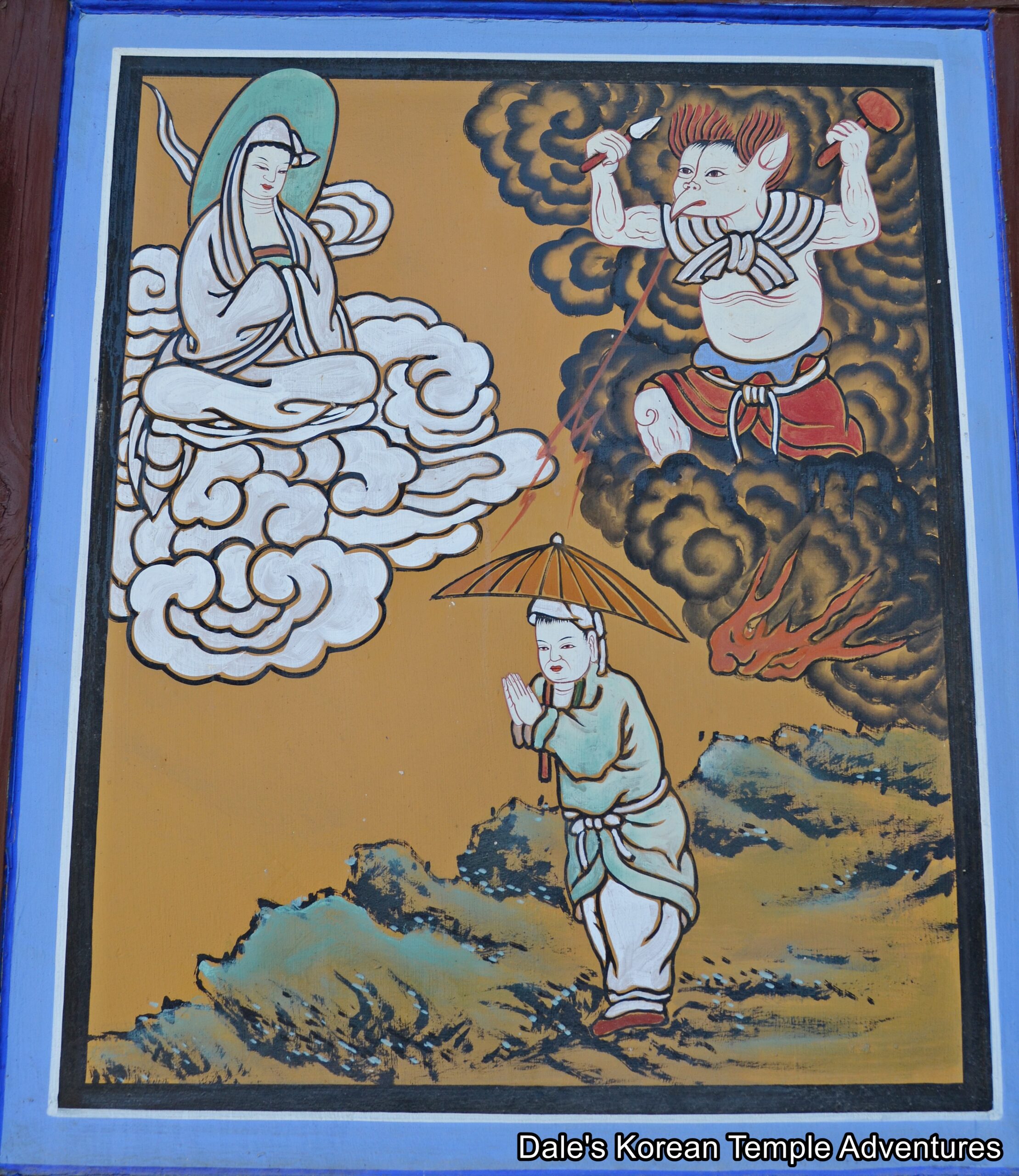
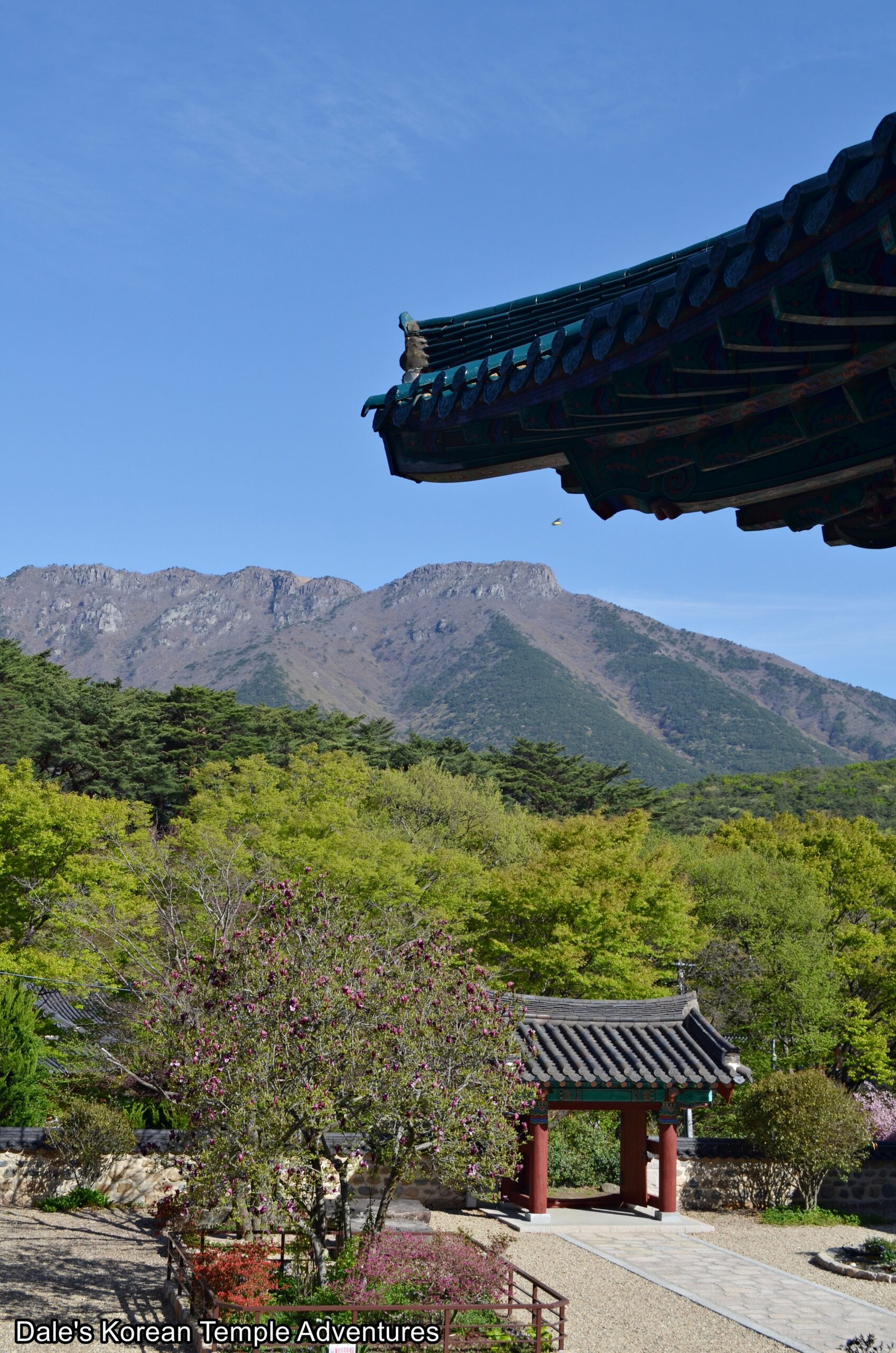
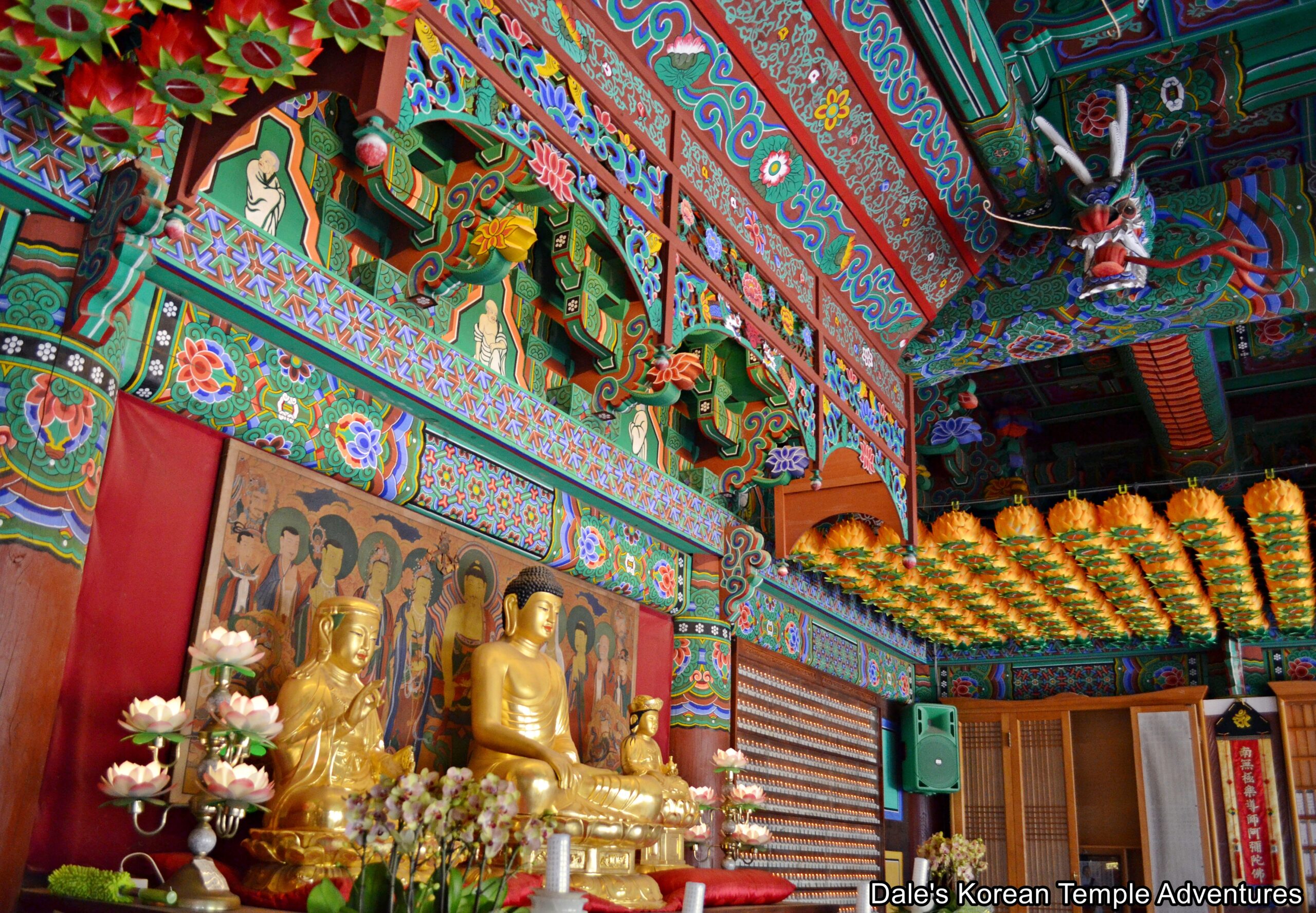
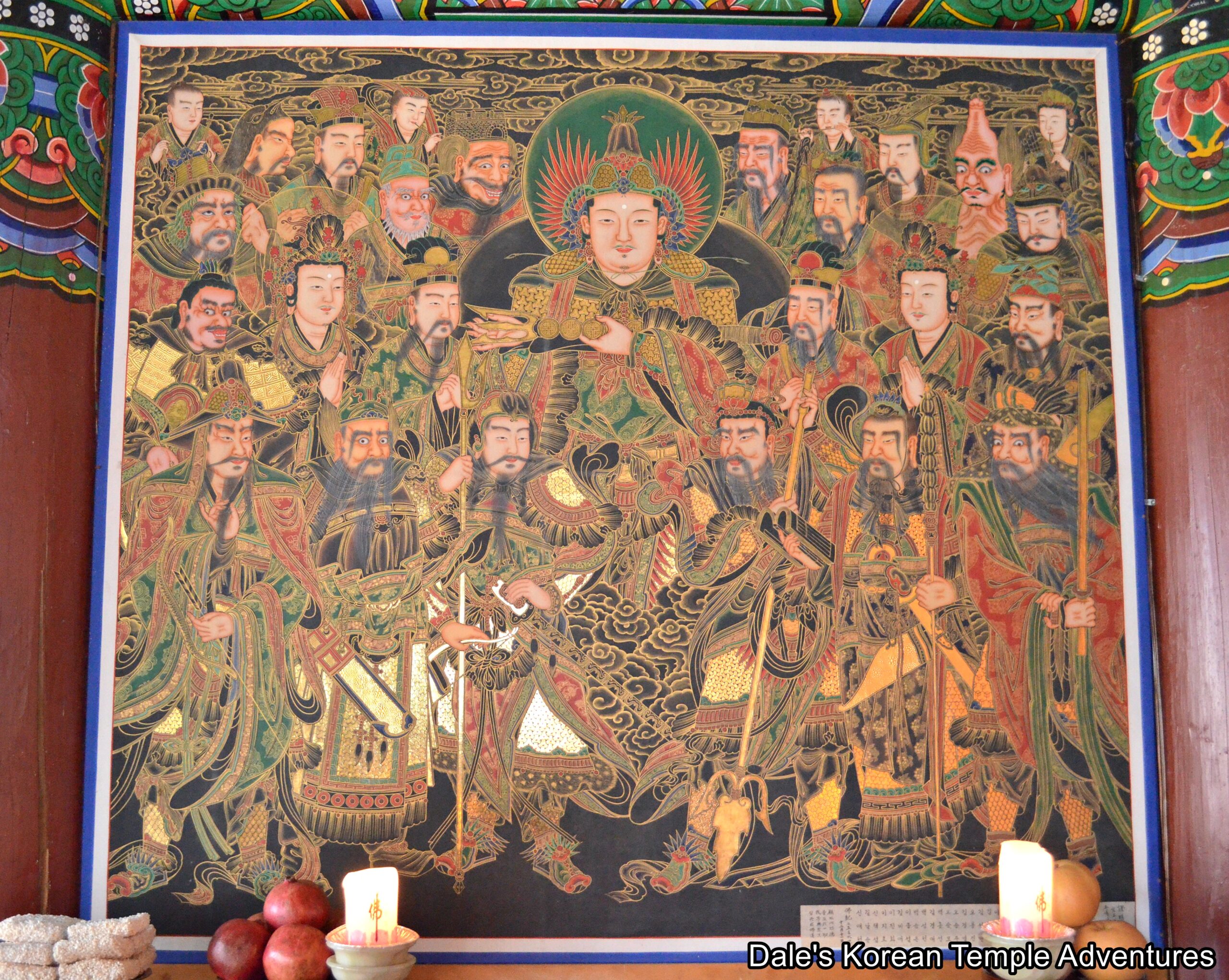
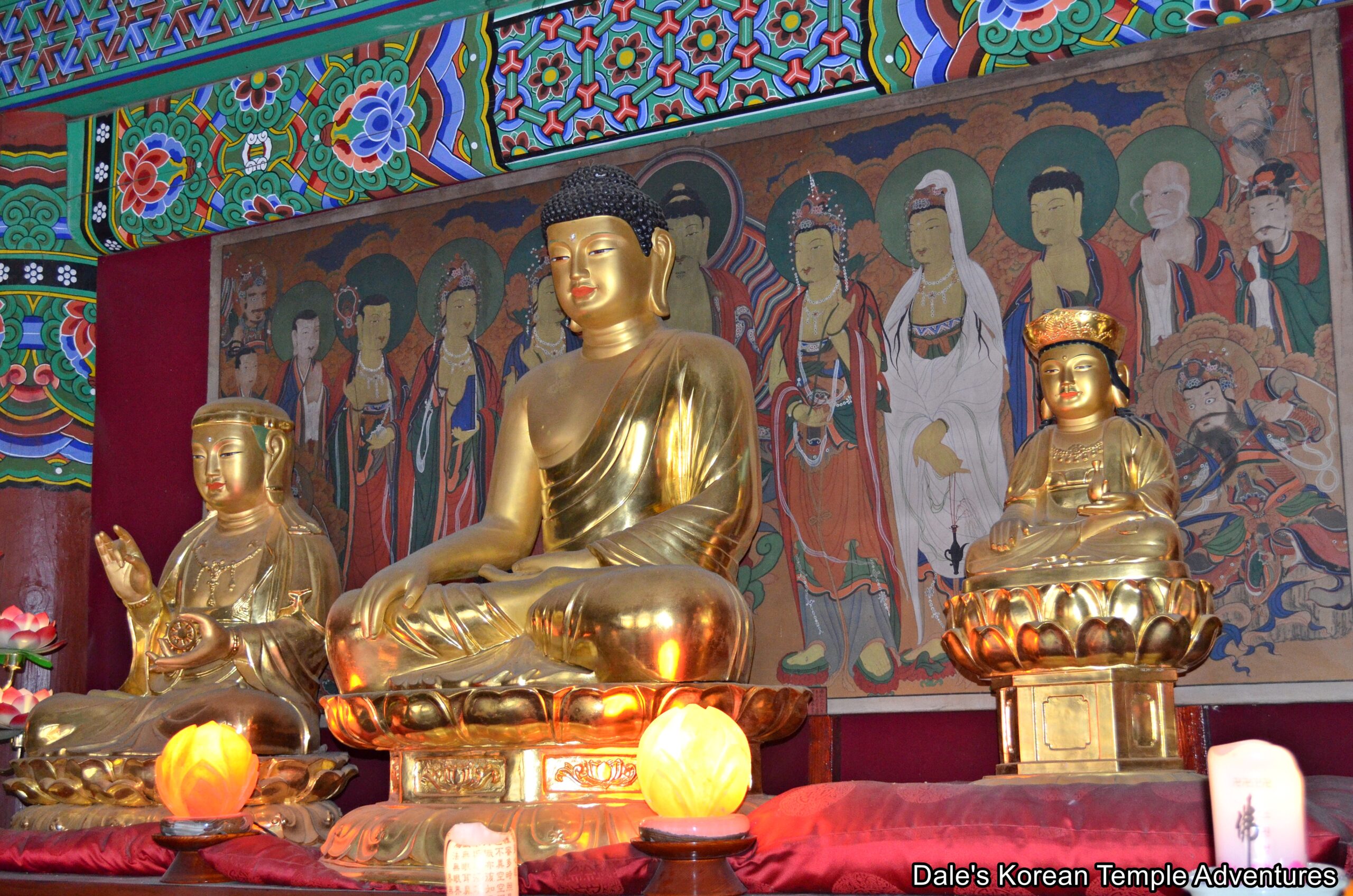
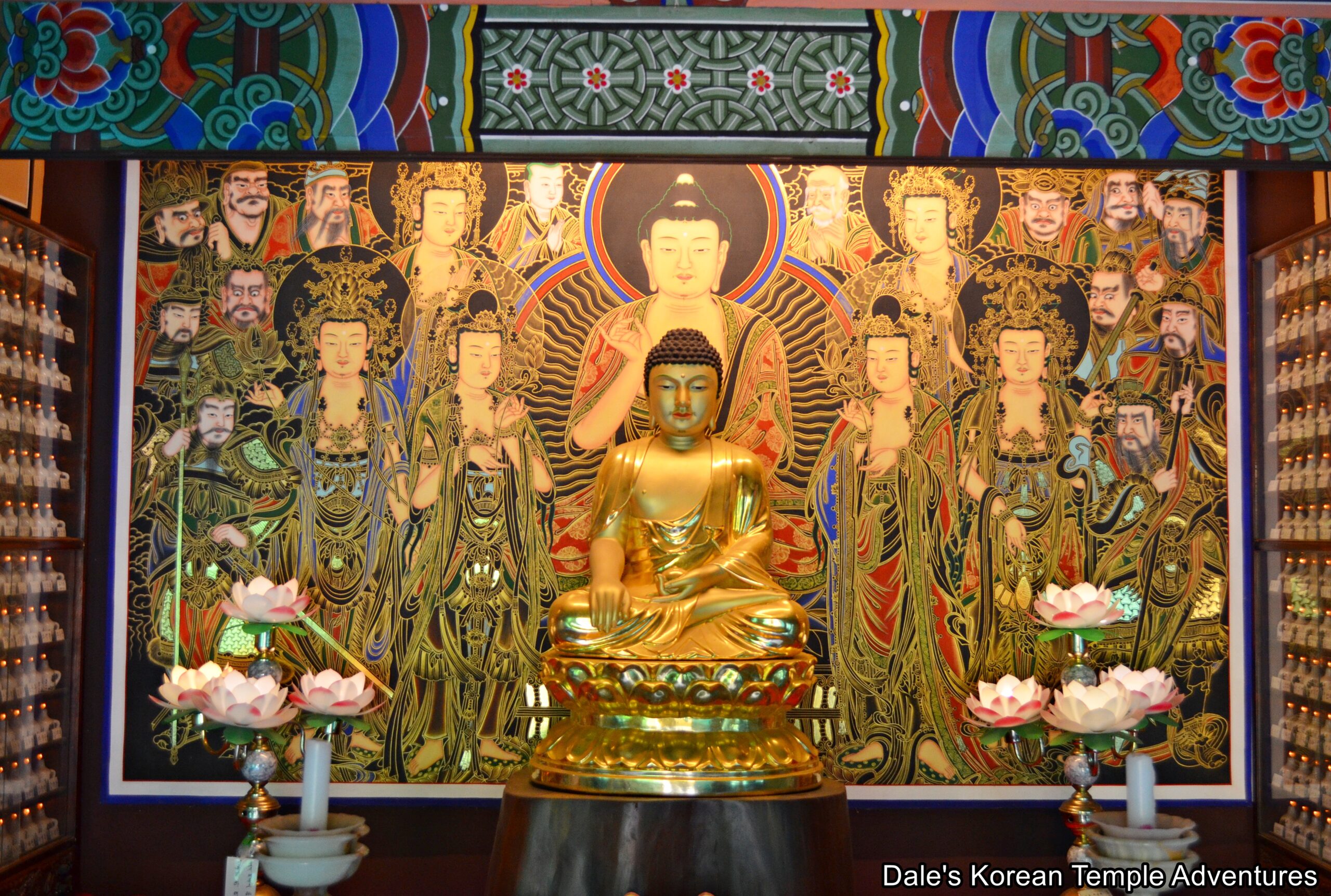
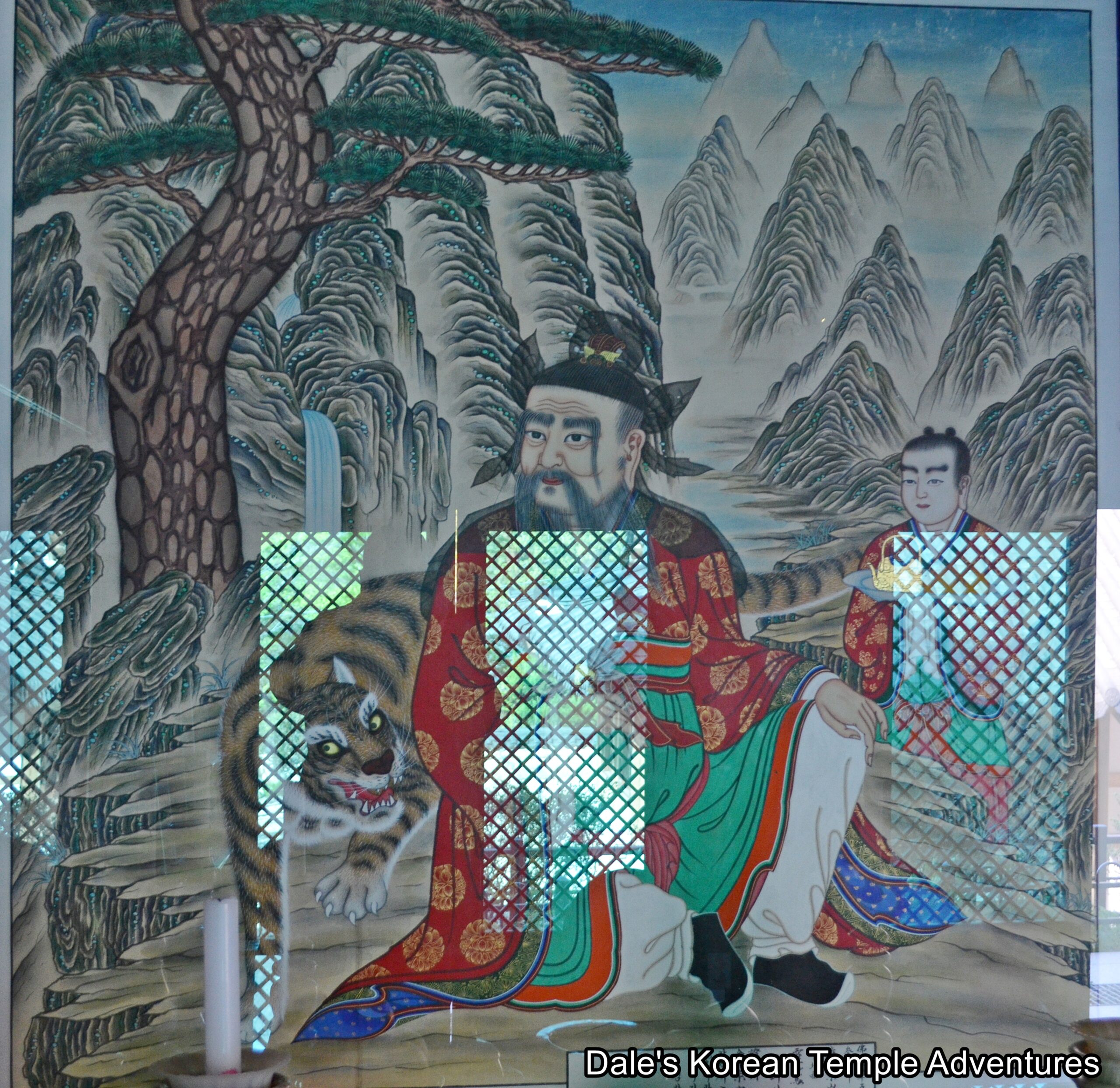
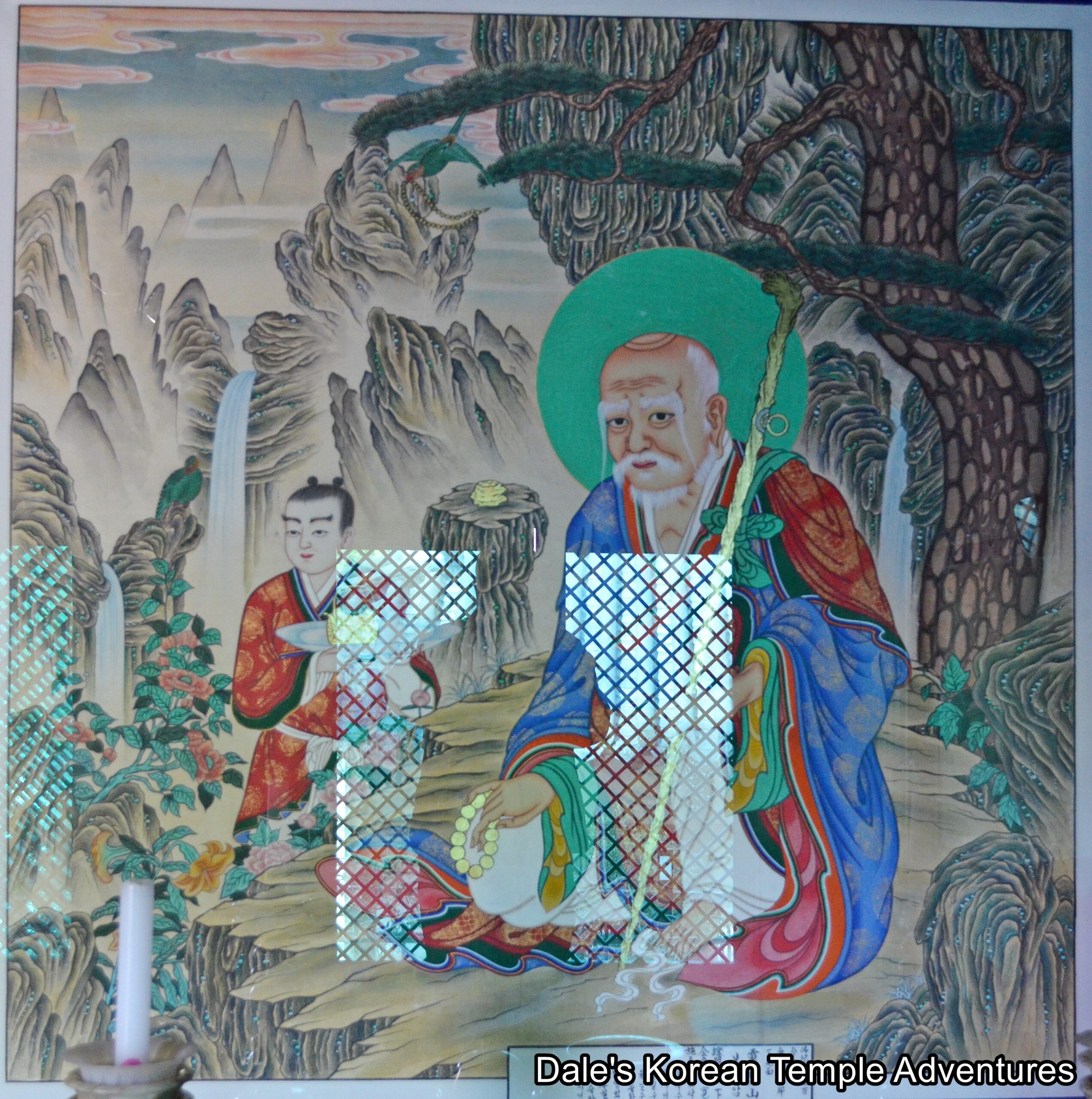
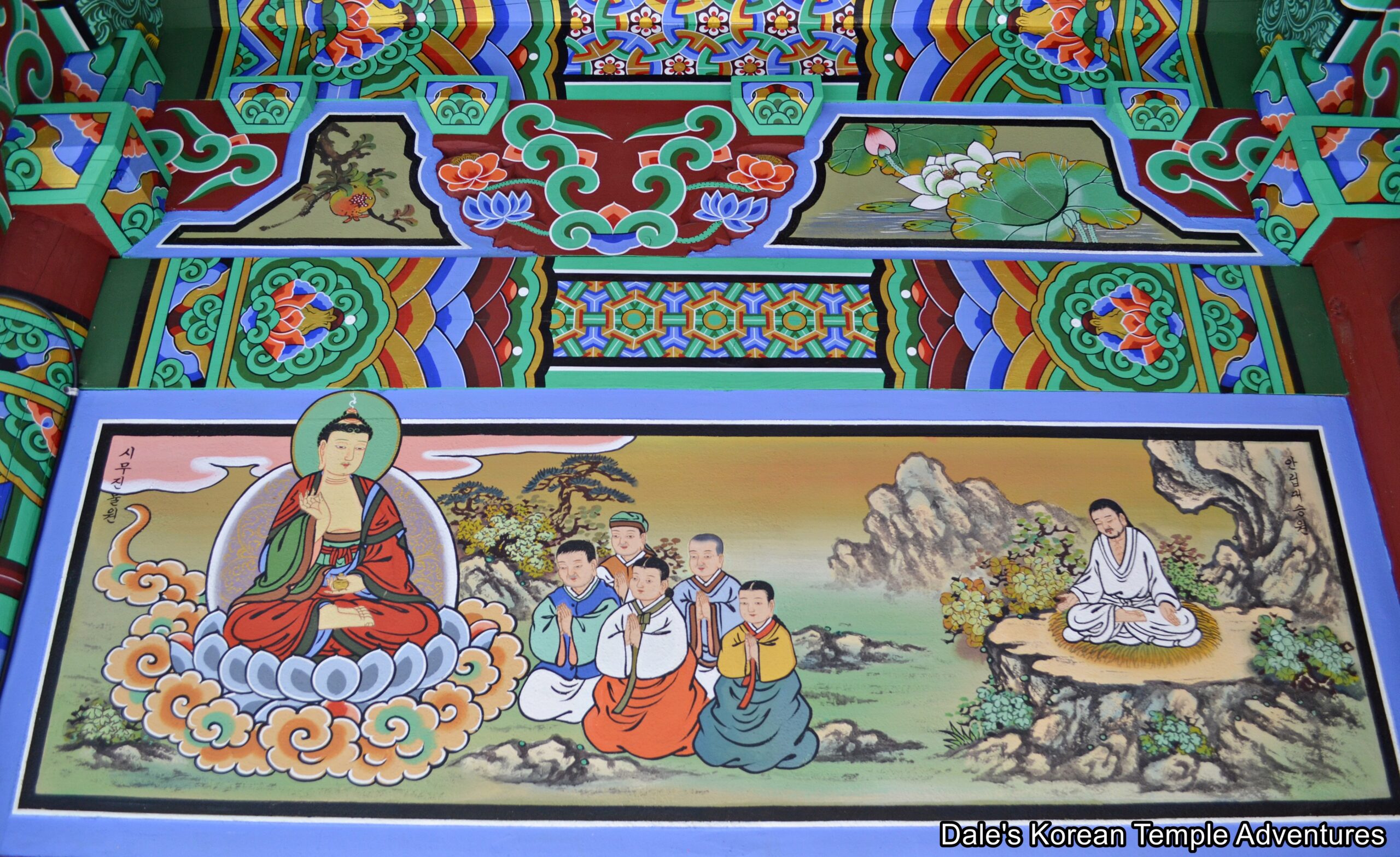
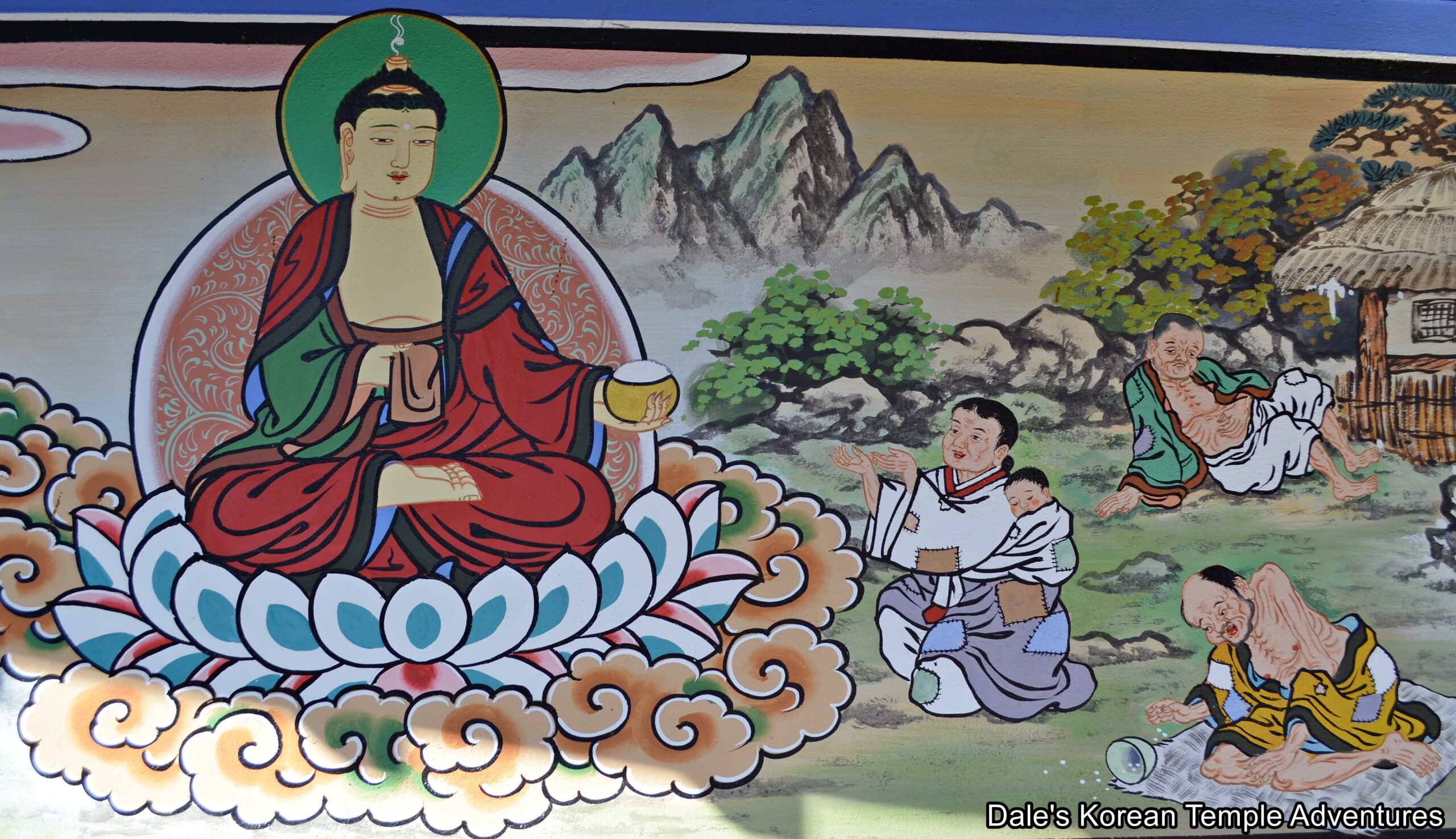
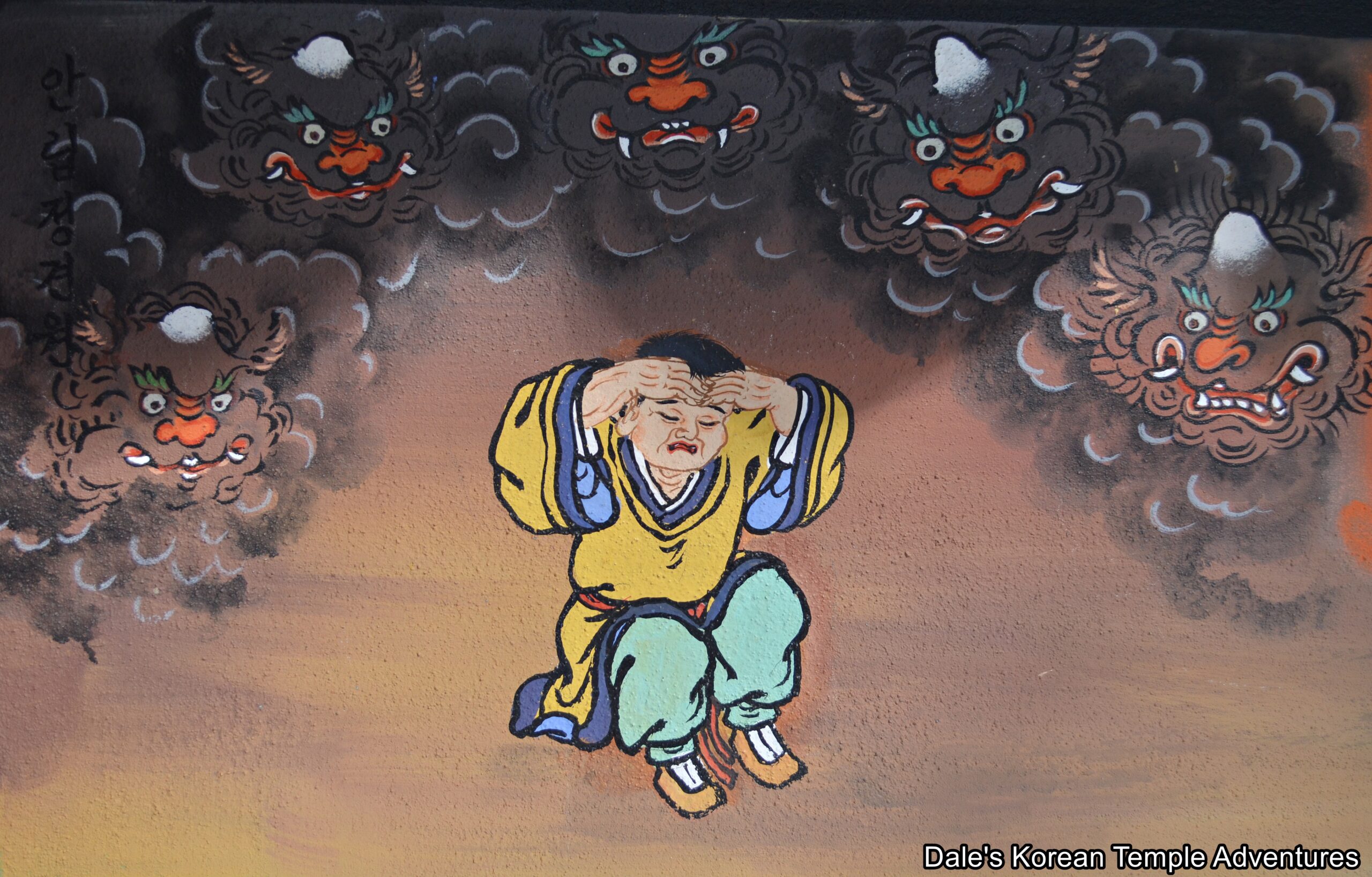

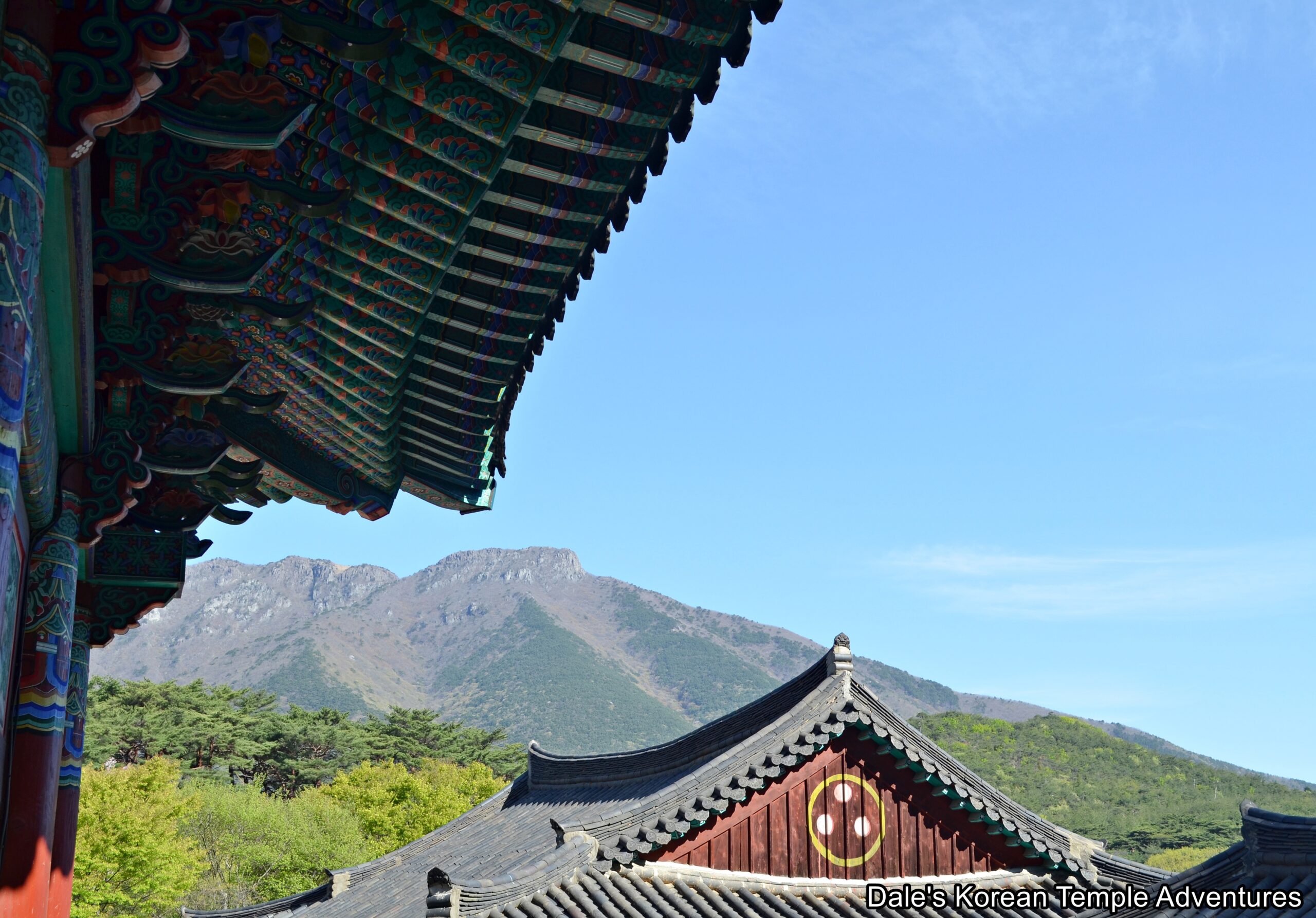


Recent comments